



Kh-55 Granat
AS-15 Kent
SS-N-21 Sampson
SSC-4 Slingshot
The Kh-55 strategic cruise missile is used for destroying targets whose coordinates are known. Its guidance system combines inertial-Doppler navigation and position correction based on comparison of terrain in the assigned regions with images stored in the memory of an on-board computer. The propulsion system is a dual-flow engine located underneath the missile's tail. The missile carries a 200 kt nuclear warhead.
The first tests of this missile were conducted in 1978 and a few units were installed on Tu-95MS aircraft in 1984. Three aircraft versions of this missile are known: Kh-55 (Article 120, alias RKV-500, NATO's AS-15a), Kh-55-OK (article 124), Kh-55SM (Article 125, alias RKV-500B, NATO's AS-15b). In addition the land version RK-55 (SSC-X-4) was destroyed in compliance with INF disarmament negotiations. The sea version SS-N-21 Sampson is reportedly deployed on the Akula, Victor III, Yankee Notch, and Sierra class SSN submarines. However, since the SSC-4 coastal defense variant is carried in a 25.6-in (650-mm) diameter canister, some analysts have suggested that the sub- launched variant is probably for launch only from 650-mm diameter torpedo tubes.
Russian President Boris Yeltsin announced in January 1992 that he would end the manufacture of all sea- and air- launched cruise missiles. In March 2000 it was reported that the Russian Air Force had tested a new cruise missile with a conventional warhead. It was said to be a Kh-555 missile, which was developed from the Kh-55, with a range of 2000 - 3000 km.
Raduga Kh-65
The Kh-65 missile is a tactical modification of the strategic Kh-55.
According to the first available information (on data sheets at the 1992
Moscow Air Show), its range was to be 500-600 km. The reason for shortening
its range was that, according to terms of the SALT-2 Treaty, any aircraft
carrying missiles with a range longer than 600 km will be regarded as
a strategic one and the number of such aircraft is strictly limited.
A full-sized versio of the Kh-65SE was displayed for the first time
in 1993 (February in Abu Dabi, then September 1993 in Zhukovskiy and Nizhniy
Novgorod). The missiles shown at the exhibitions did not differ from the
earlier versions except for their range, quoted as 250 km when launched
from low altitude and 280 km when launched from high altitude.
The Kh-65 was intended for use against large targets with a larger
than 300 m2 effective reflecting surface area, particularly
warships, under conditions of strong electronic interference. It approaches
the target guided by an inertial navigation system while flying at a low
altitude. Having reached the region where the target is located, it rises
to a higher altitude and its active-radar target seeking system turns
on.
Specifications
|
| Version | Kh-55SM | Kh-65SE
|
| Contractor | Raduga OKB
M. I. Kalinin Machine Building Plant |
|
| Entered Service | |
|
| Total length | 8.09 m | 6.04 m / 19 ft, 6 in
|
| Diameter | 0.77 m; (Kh-55 0.514 m) | 0.514 m
|
| Wingspan | 3.10 m | 3.10 m / 10 ft, 1 in
|
| Weight | 1700 kg | 1250 kg
|
| Warhead | 200-kt nuclear | 410 kg HE
|
| Propulsion | |
|
| Speed | Mach 0.48-0.77 | Mach 0.48-0.77
|
| Maximum effective range | 3000 km (Kh-55 2500 km) | 250-280 km
|
| Flight Altitude | | 40-110 m
|
| Guidance mode | |
|
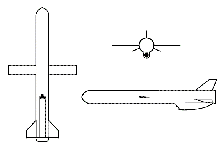
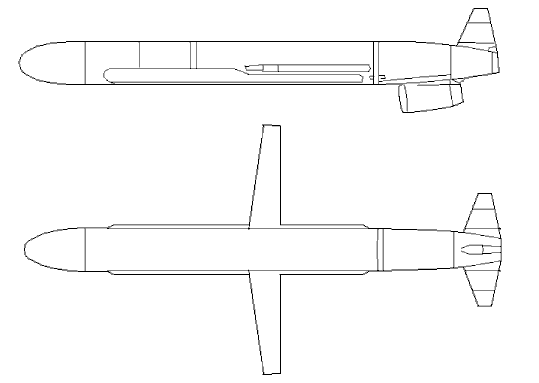
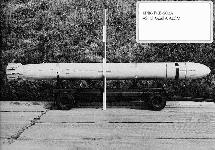 AS 15 Mod A
RKV-500A
ALCM
AS 15 Mod A
RKV-500A
ALCM
|
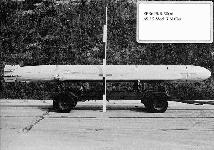 AS 15 Mod B
RKV-500B
ALCM
AS 15 Mod B
RKV-500B
ALCM
|
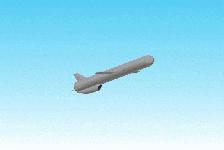
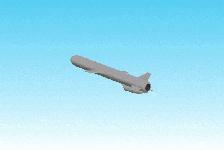
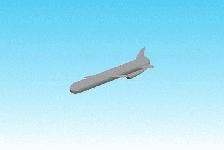
Sources and Resources
- "Survey of Russian Guided Air-to-Ground and Anti-Ship Missiles" by Piotr Butowski,
NOWA TEKHNIKA WOJSKOWA March 1995 No 3, pp 15-19 [JPRS-UMA-95-023: 7 June 1995]
http://www.fas.org/nuke/guide/russia/bomber/as-15.htm
Implemented by John Pike,
Charles Vick,
Mirko Jacubowski,
and Patrick Garrett
Maintained by Webmaster
Updated Tuesday, August 08, 2000 5:40:16 PM










